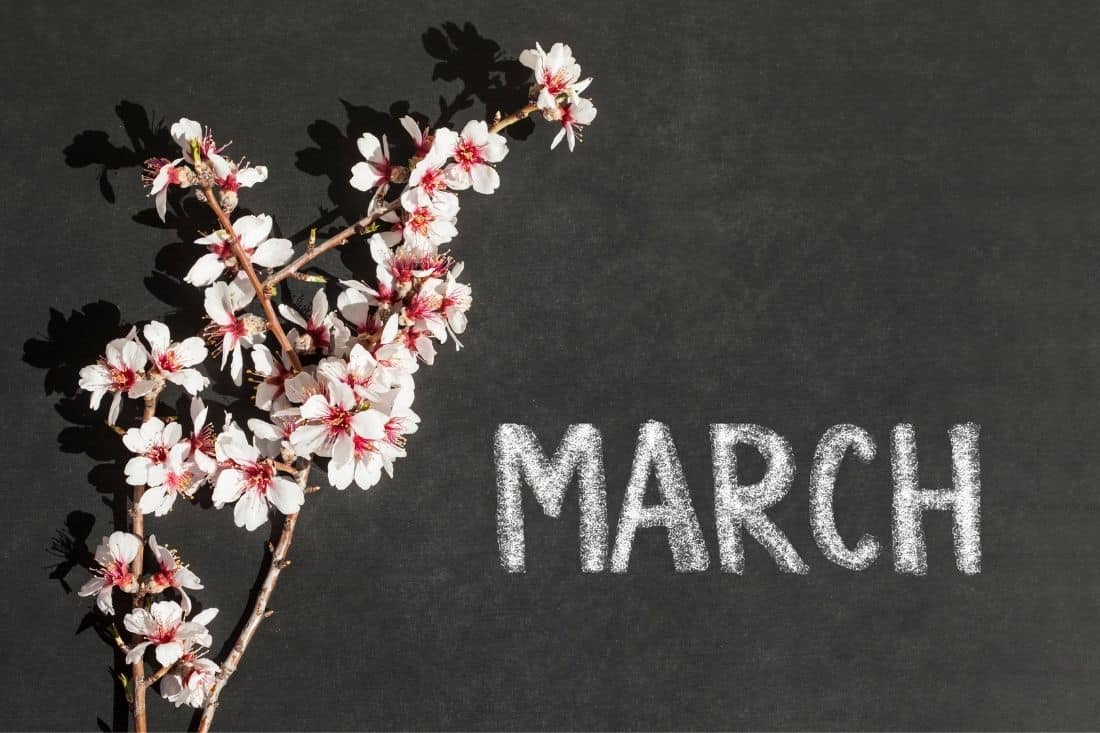Deep green in color & stunning in jewelry, emeralds might someone green with envy. These fun facts about emeralds will surprise you though!
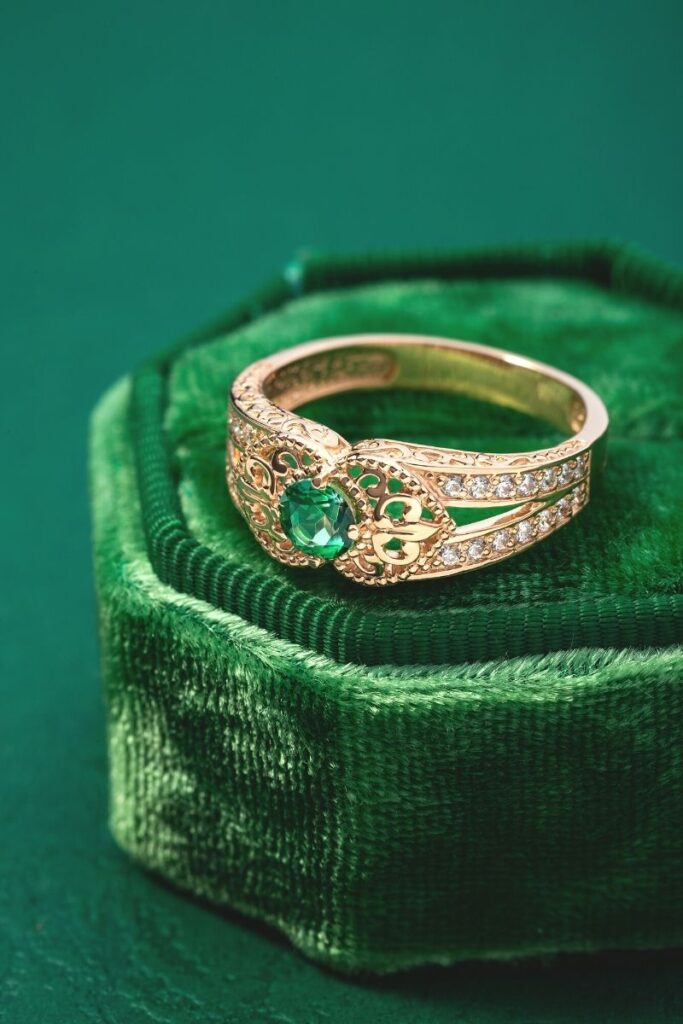
When most people think of emeralds, they think of dark green stones intricately cut and set in precious metal. But there is so much more to these beautiful stones than meets the eye!
From civilizations from thousands of years ago to modern times, emeralds have long been a source of fascination to all races of people. That’s why we wanted to put together these unique facts about emeralds. They just might make you a little green with envy if you don’t have one!
In parts of the world, people consider emeralds to bring good luck. They also represent youth and beauty. And depending on who you ask, they even depict balance and foresight. We bet you didn’t know your emerald earrings could do all that!
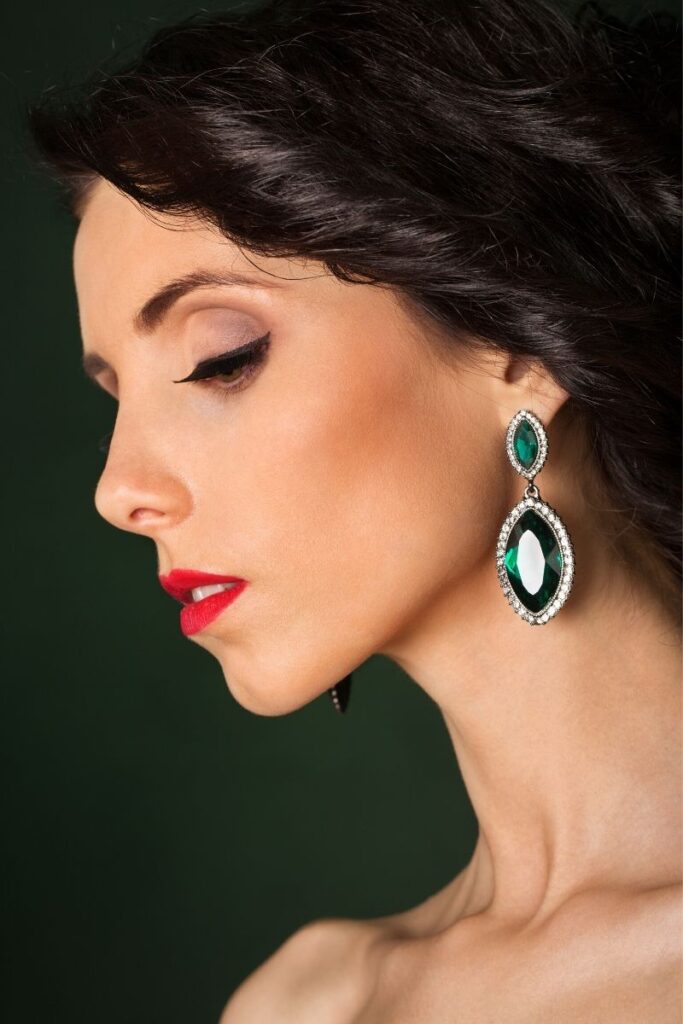
While miners find emeralds in many places around the world, there is one country responsible for more than 50% of the emeralds today. We’ll give you three guesses about which country that is…
Did you know Cleopatra had an obsession with emeralds? People all around her were well aware she had a love for these green stones and this queen had quite the collection.
Stick with us to learn some emerald facts that will surprise you. We promise you’ll even learn something new too!
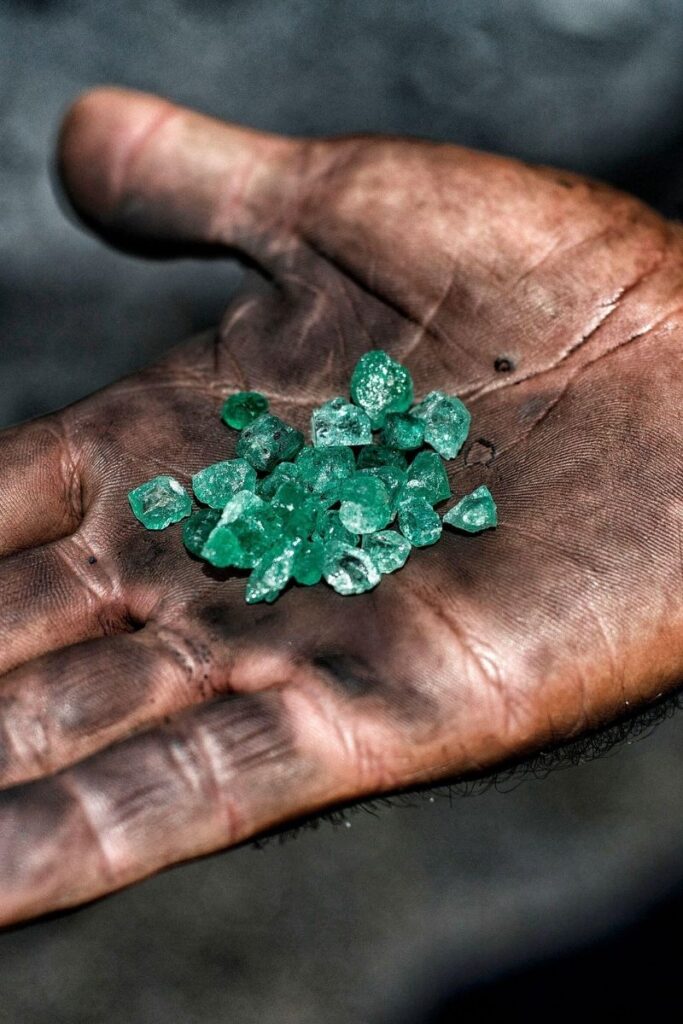
Contents:
20 Fun Facts About Emeralds
1. It’s all about science
The mineral beryl almost entirely makes up emeralds. But they get their green color from small amounts of chromium and vanadium (chromium the element is what gives emeralds their coloring, not the web browser!)
2. They are more expensive than diamonds
Most people know diamonds are the hardest natural substance on Earth measuring a 10 out of 10 on the Mohs Scale of Hardness. Emeralds only measure a 7.5 or so.
This means emeralds are much more likely than diamonds to chip or crack, making setting an emerald more of a difficult task than setting a diamond.

3. Half of all emeralds come from one country
Did you get your three guesses in? Well, just over 50% of emeralds in existence today come from Colombia in South America.
In fact, depending on your source, Columbia supplies almost 90% of the Earth’s minerals. And most of these stones come from three specific mines – Muzo, Chivor, and Consuez. Emeralds have different properties depending on the mine they come from, as well.
4. Egyptians were the first to mine emeralds
The first instance of people mining emeralds for use was in Egypt around 1500 BC. The Egyptians loved emeralds, in particular Cleopatra. She adored emeralds so much that she filled many pieces of her jewelry and clothes with this stone. (Here are some other facts about fashion for you guys!)
While she likely loved the beautiful color, Egyptians also believed emeralds could treat eye disease and increase fertility.
5. They get mixed up in history
As we said, Cleopatra was a self-proclaimed lover of all things emeralds. However, gemologists discovered in modern times that much of her collection of emeralds was, in fact, peridot.
While these stones are both green, emerald is typically a darker, deeper green while peridot is a lighter shade closer to olive. Hey, it happens to the best of us.
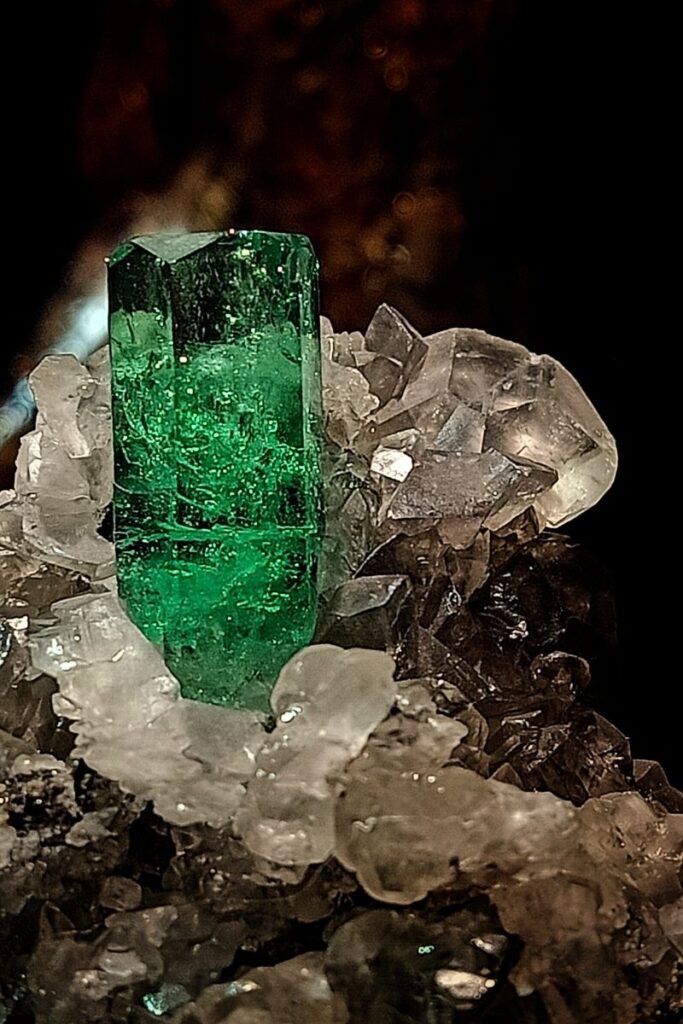
6. The Incas mined emeralds
The Spanish Conquistadors found beautiful emeralds in South America during their explorations. However, the reason they found these stones is because the Incas had already been mining them.
This discovery opened up trade for emeralds throughout the rest of the world. The Aztecs were also using emeralds long before these stones were widely traded.
7. Emeralds are hard to recreate
Scientists have been able to replicate many precious stones throughout history. In fact, in the early 1900s, French chemist Auguste Verneuil first created a synthetic version of both rubies and sapphires. However, man-made emeralds would be long coming.
It wasn’t until the mid-1900s that the first synthetic emerald was created. The 1-carat Chatham emerald created by Carol Chatham is on display at the Smithsonian. Today, emeralds are widely available because of the process discovered to create a nearly exact man-made version of this beautiful, green stone.
8. Very few are flawless
Most emeralds have some imperfections in them. Because this stone is not as hard as other stones, it is nearly impossible to shape and polish without causing unintentional changes.
How’s this for an emerald fact? Jewelers refer to imperfections or inclusions in emeralds as an internal jardin. In French, this word means garden. It makes sense as a garden is green and full of imperfections in design. An emerald without any internal jardins is incredibly rare and thus, incredibly expensive.
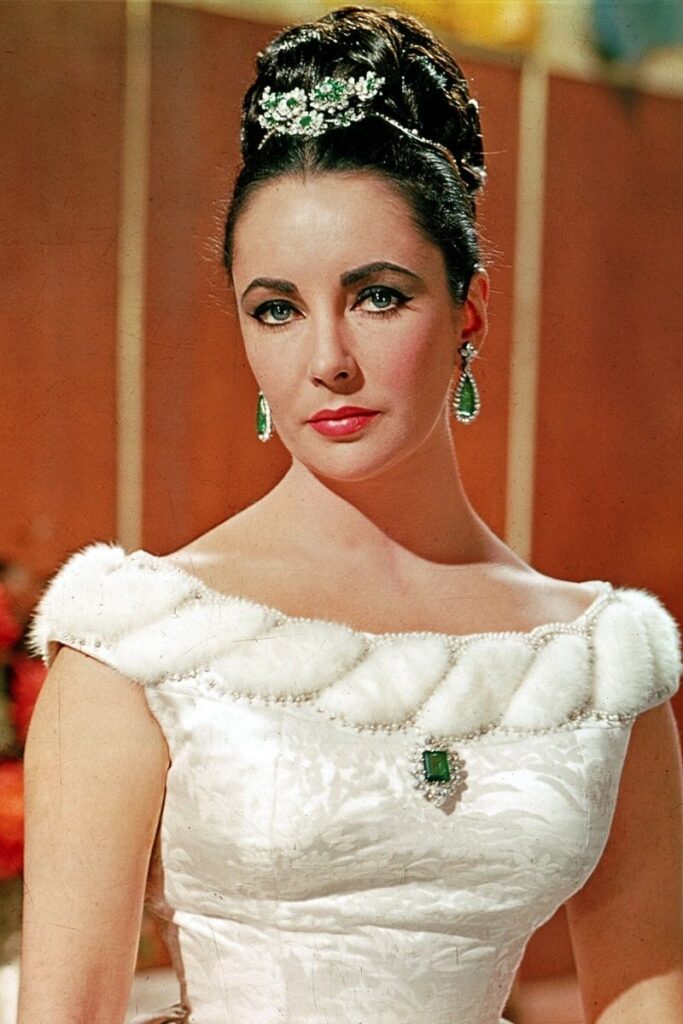
9. Elizabeth Taylor loved them, too
Now for a movie fact about emeralds. Richard Burton proposed to Ms. Taylor with an emerald broch that she could attach to an exquisite necklace.
The broch was an 18-carat rectangular-cut emerald from Colombia. It had 12 pear-shaped diamonds around it, as well. When it sold in 2011 from her estate, it went for a whopping $6.5 million! That set a record for emeralds with an astounding $280,000 per carat value.
10. They’re dense
An emerald is denser than a diamond. So, if you set a 1-carat emerald next to a 1-carat diamond, the emerald will look bigger!
11. Emeralds are old
Though humans haven’t been mining emeralds forever, scientists estimate that the oldest emeralds are almost 3 billion years old. Talk about ancient!
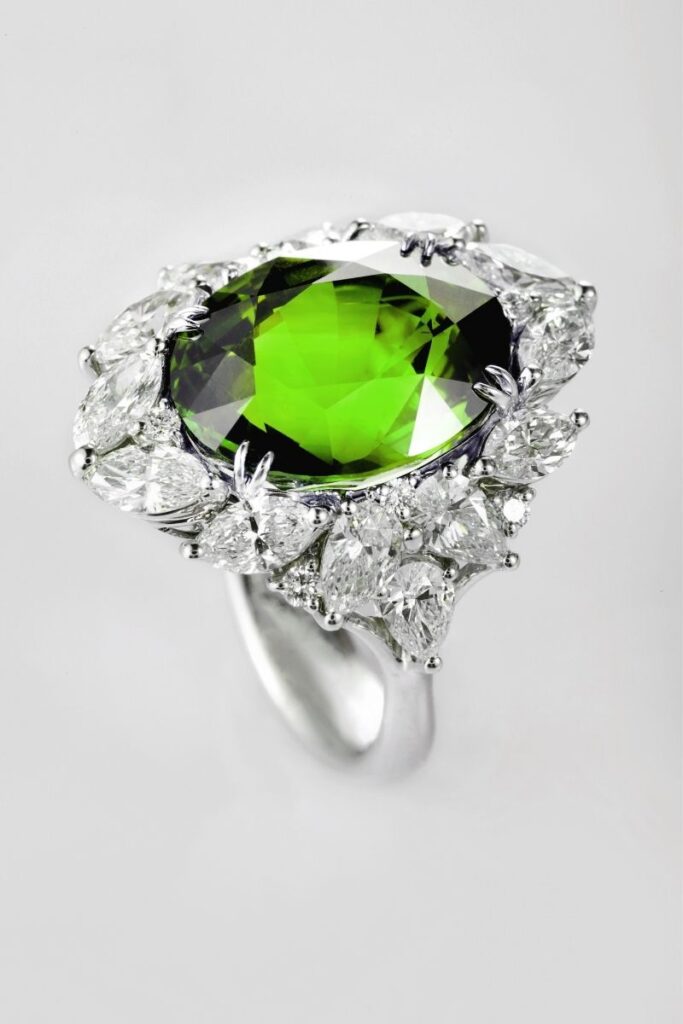
12. Can you see the future?
According to some ancient traditions, placing an emerald under your tongue would help you gain a glimpse into the future? Though, having an emerald to put under your tongue likely meant your future would be pretty good no matter what!
13. Emeralds are mined in America
In previous decades, people found emerald stores in parts of North America. While these mines are few and far between, they do exist. Oftentimes, these mines are quickly depleted after only a few years.
The most significant find was in the Yukon in the late 1990s. Miners found hundreds of thousands of emeralds over a five-year period in this area. Still not comparable to Colombia though.
14. They are measured on 4 factors
Similar to diamonds, jewelers base the value of an emerald on four different factors. Color, clarity, cut, and carat (or weight) are all used to determine how valuable or expensive an emerald is.
The most appealing, and therefore most expensive colors are vivid green or perhaps green with a blue-ish tinge. There needs to be an even saturation as well.
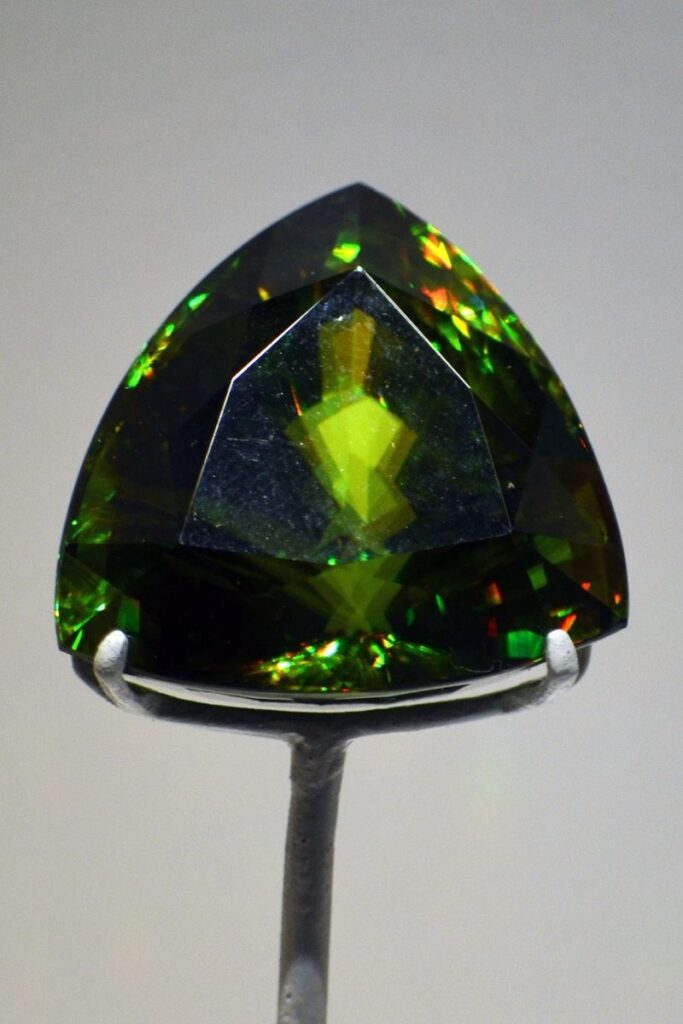
15. This stone is sometimes really big
There are some emeralds in existence that are massive. The Duke of Devonshire, while uncut, is the largest emerald in existence. This emerald is an incredible 1,383.93 carat. In layman’s terms, this emerald is just over ½ pound!
16. Emeralds are very valuable
On a per-carat basis, emeralds are often worth more than diamonds. There are many reasons why this is true. Partly because, as mentioned, emeralds are harder to set in jewelry than diamonds. And partly because emeralds are rare too.
Owning an emerald might be a better investment in the long run than owning a diamond.
17. It’s gonna be May
If you were born in May, then you are lucky enough to have this brilliant, green emerald be your official birthstone! Also, if you are celebrating your 20th, 35th, or 55th wedding anniversary, consider getting your spouse an emerald.
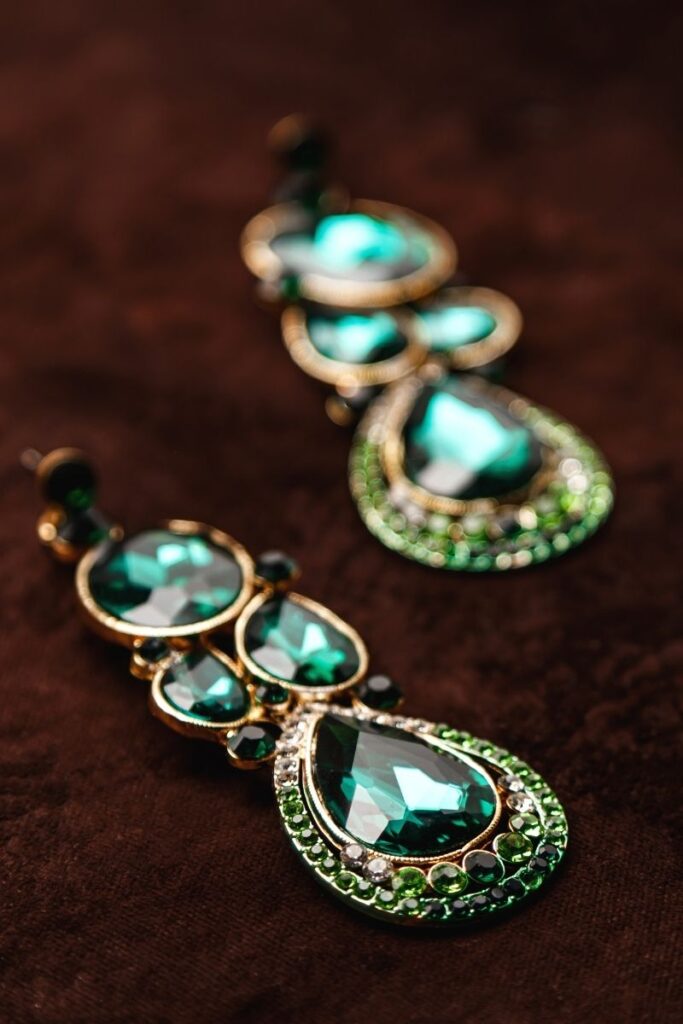
18. Are you forgetful?
In some cultures, people believe emeralds help the owner increase their intuition. Plus, some people think emeralds protect your memory and prevent you from forgetting. Finally, some think emeralds guard against memory loss and enhance intuition.
19. They’re calming
A lapidary is a person who cuts and polishes stone. As you can imagine, this job requires an intense amount of focus and concentration. As a result, a lapidary’s eyes can begin to hurt after a long amount of work.
To help with this eyestrain, lapidaries often work on emeralds because the soft, green color allowed them to rest their eyes.

20. Emeralds are not created equal
For an emerald to be valuable, it must be perfectly clear and transparent. It must also be the correct color green, not too dark or light. In fact, if the green beryl creates a stone that is too light, gemologists will not even consider it an emerald.
Who wants more fun facts?

If you’re looking for some recommendations, these are a few of our favorite fact books to buy. We use these when planning fun trivia nights with family and friends!
These emerald facts span history and the world! Whether you prefer emeralds or other precious stones like diamonds in your jewelry, these fun facts about emeralds should still make you appreciate this beautiful, green stone.
Did we miss any emerald stone facts? If so, let us know in the comments below and we’ll add them to this article!



